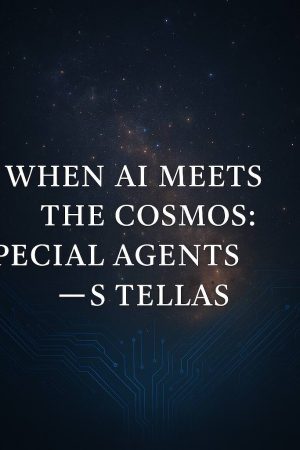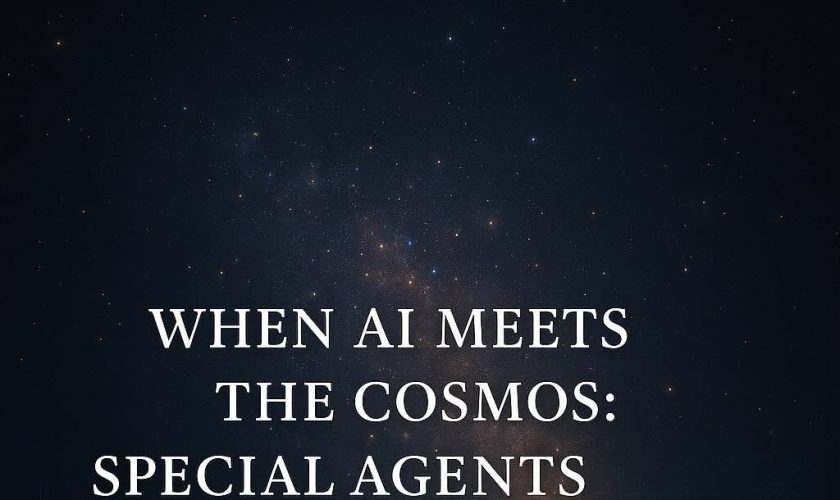Long before algorithms could recognize text or predict outcomes, humans learned to recognize something far more abstract — patterns in the cosmos.
We looked up at the night sky and began connecting stars into constellations, linking the movements of the sun and moon to seasons, and weaving meaning into cycles we could neither control nor fully explain. That was the birth of astrology — not as prophecy, but as humanity’s earliest science of pattern recognition.
It wasn’t about fortune-telling; it was about observation.
Astrology studied relationships — between celestial rhythms and emotional states, between time and transformation. It became a mirror for how humans think: by connecting dots until meaning emerges.
The Oldest System of Intelligence
If you strip away the symbolism, astrology at its core is a data system.
Each birth chart is a structured dataset — coordinates of planets, angles, and timing — interpreted through a framework built on observation, correlation, and meaning.
Thousands of years before “machine learning,” humans were already learning from machines of a different kind — the cosmic kind. The sky was our database; intuition, our first neural net.
A Meeting of Two Worlds
Fast-forward to today.
We now build systems that also recognize patterns — artificial intelligence models that read, reason, and infer.
But while AI seeks precision, astrology seeks perspective. One calculates; the other contemplates.
What if the two could meet?
Could AI reinterpret astrology — not as superstition, but as symbolic data that reveals correlations between our decisions, emotions, and timing?
That question led to the creation of Stellas — a human-augmented AI cosmos.
✨ Introducing Stellas: The Human-Augmented AI Cosmos
Stellas isn’t a horoscope app. It’s a living experiment — a fusion of AI reasoning and ancient symbolism, designed to uncover how cosmic data can reflect life’s rhythms.
Multiple AI agents work together — one analyzes career patterns, another explores emotional cycles, and another studies timing and planetary movements. Together, they simulate what used to take hours of manual analysis, offering deep, data-driven interpretations in seconds.
If you’ve ever asked questions like “Am I on the right path?” or “Is this the right time to make a change?” — Stellas gives you an immediate perspective. You enter your birth details, and the AI interprets — not your fate, but your context.
🌙 What You’ll Get in the Stellas Android App
You can now download the Stellas Android app to experience personalized AI-cosmic insights across every area of life:
💼 Career Timing — 12 power windows, salary timing & job switch dates
❤️ Love & Relationships — Attraction peaks, compatibility & deep conversations
💚 Health & Wellness — Energy cycles, workout windows & recovery periods
📅 Daily Guidance — Personalized insights for each day of the year
🌙 Moon Phases — Lunar timing for manifestation and release
⭐ Transit Reports — Major planetary movements affecting your chart
💬 Ask Anything — Get instant cosmic answers to your questions
Every feature is designed to merge AI precision with human reflection — not to dictate outcomes, but to reveal possibilities.
It’s About Perspective, Not Prediction
No AI, scientist, or astrologer can promise certainty.
That’s not what Stellas aims for. Its goal is awareness.
Think of it like a weather forecast for life.
If rain is predicted, you carry an umbrella. If it doesn’t rain, you still have the awareness to adapt. Similarly, Stellas helps you anticipate emotional or professional “climates” — not by dictating choices, but by illuminating them.
It’s a reminder that self-awareness is not an algorithmic output — it’s a conscious act of reflection. The insights may not always be exact, but they always offer perspective — and that’s where transformation begins.
The Deeper Layer of Intelligence
When AI starts interpreting symbolic systems like astrology, it moves beyond calculation into something profoundly human — interpretation.
It begins to see how we construct meaning, how we link logic with emotion, and how we turn patterns into stories. In doing so, it mirrors the very process that defines intelligence — the search for significance amid chaos.
A New Kind of Curiosity
Stellas represents this convergence — of logic and language, reason and rhythm.
It’s not about belief; it’s about exploration. It doesn’t replace human intuition; it augments it.
Because the true evolution of AI may not lie in replacing human reasoning — but in expanding it.
When machines begin to study patterns as humans once did, they help us rediscover something timeless: the art of seeing.
My Motivation for Building Stellas
At its heart, Stellas is born from creativity — the desire to explore what happens when technology and imagination collide.
The journey serves two purposes:
1️⃣ To see if today’s copilots and GenAI tools can truly deliver an end-to-end project. (More on this in a later post — because you only realize the gaps when you build something real.)
2️⃣ To take a domain often seen as mystical — astrology — and uncover hidden patterns using the latest in AI.
Whether you believe in astrology or not, there’s something here for everyone to explore.
You can explore Stellas today at stellas.me/promo — no sign-up, no name, just your birth details.
In under a minute, three specialized AI agents will reveal insights about you, your life, and your next milestone.
You might find resonance. You might find surprise.
But you’ll definitely find perspective — a quiet moment of reflection in a world that rarely pauses.
🎧 You can also listen to the latest episode of “Agentic AI: The Future of Intelligent Systems”, which covers this topic in depth — available now on Spotify at https://open.spotify.com/episode/1H5l2YXzIM3mm91968GUqV?si=C9MzC54fQXuFNZDuO77VSA












